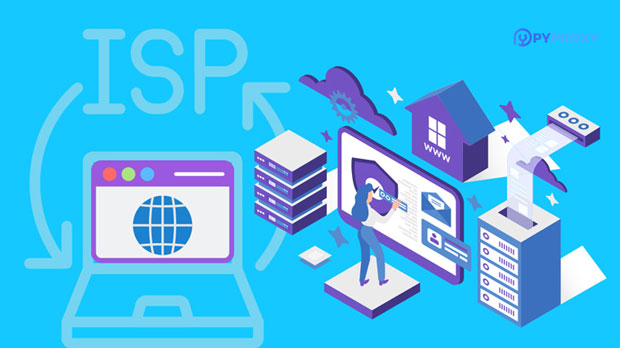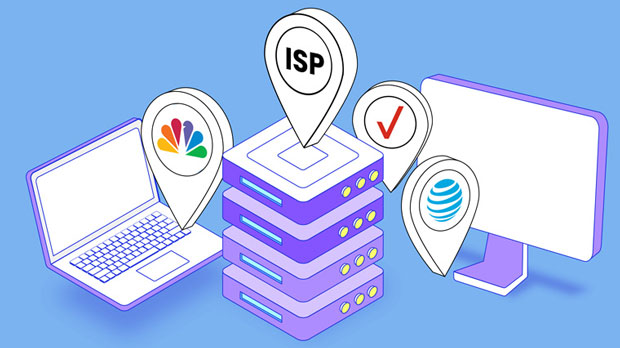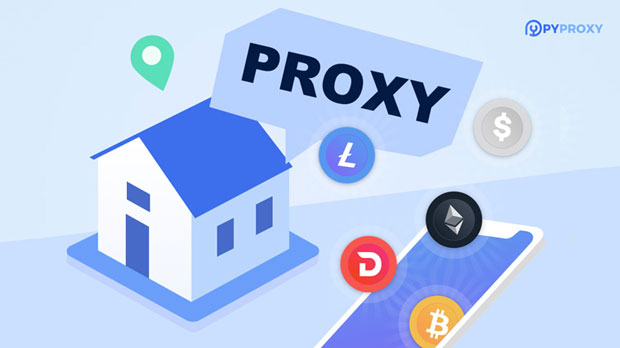Comparison of Free Proxy Hosting and Socks5 Proxy Performance in Data Crawling
In the world of data scraping, proxy servers are essential tools for ensuring smooth and uninterrupted operations. Two commonly used proxy types are free proxy hosts and sock s5 proxies. While both serve the same basic purpose of hiding the user's real IP address and providing anonymity, their performances and effectiveness in data scraping differ greatly. Free proxy hosts, typically low-cost or free to use, often come with limitations such as slower speeds and reliability issues. On the other hand, Socks5 proxies offer greater privacy, faster speeds, and a more stable connection, making them a more reliable choice for data scraping tasks. This article will provide a deep dive into the performance differences between free proxy hosts and Socks5 proxies in the context of data scraping. Introduction to Proxy Servers and Their Role in Data ScrapingData scraping is a technique used to extract large amounts of data from websites. Since many websites impose restrictions such as IP-based blocking to protect against mass scraping, using proxies has become a critical tool in overcoming these challenges. A proxy server acts as an intermediary between the user's device and the internet, masking the user's IP address and allowing them to make requests to a website without directly revealing their real identity. This makes proxies an invaluable asset for data scraping, enabling users to bypass rate limits, avoid IP bans, and ensure anonymity.What are Free Proxy Hosts?Free proxy hosts are typically proxy servers that are made available to users without charge. They often come with limitations in terms of speed, reliability, and security. Free proxies are generally shared among multiple users, which can result in congested networks, slow performance, and frequent downtimes. Moreover, many free proxy services do not provide encryption or secure connections, which increases the vulnerability of the user’s data. While they can be useful for light scraping tasks or for testing purposes, their performance often leaves much to be desired when compared to paid or more advanced proxy solutions.Performance Challenges with Free Proxy HostsFree proxy hosts are notorious for their inconsistency and unreliability in the context of data scraping. The most common issues include:1. Speed: Since free proxies are often shared by a large number of users, the bandwidth is typically insufficient for high-speed data scraping. This can lead to slower scraping times and inefficient operations. 2. Reliability: Many free proxies are unstable, leading to frequent disconnections or failures to establish a connection. This can be especially problematic for data scraping operations that require continuous and uninterrupted access to the target website.3. Security Concerns: Free proxies often do not encrypt the traffic between the user and the server. This makes them vulnerable to attacks, such as man-in-the-middle attacks, where malicious parties can intercept and manipulate data.4. IP Blocks: Free proxy hosts are often used by many users simultaneously, increasing the likelihood of the IP addresses getting blacklisted. Websites are more likely to detect and block IP addresses associated with free proxies, thus disrupting scraping operations.What is a socks5 proxy?Socks5 proxies are a more advanced and secure type of proxy. Unlike free proxies, Socks5 proxies offer a higher level of anonymity and privacy. They are designed to handle a wider range of traffic types, including HTTP, FTP, and even UDP, which makes them more versatile and capable of handling data scraping tasks more efficiently. Socks5 proxies provide an extra layer of security through encryption, making them more resistant to interception and attacks. They are also known for their faster speeds and more reliable connections compared to free proxies, making them ideal for large-scale data scraping operations.Benefits of Using Socks5 Proxies for Data ScrapingSocks5 proxies offer several key advantages over free proxy hosts:1. Better Performance: Socks5 proxies provide faster speeds and more stable connections, making them better suited for data scraping. Their ability to handle multiple types of traffic without compromising performance means they can scrape large amounts of data more efficiently.2. Enhanced Privacy and Security: Unlike free proxies, Socks5 proxies encrypt the connection between the client and the proxy server, ensuring that sensitive data remains protected. This encryption adds an extra layer of security, making it harder for hackers to intercept or manipulate the data being scraped.3. Bypass Restrictions More Effectively: Socks5 proxies can bypass IP-based restrictions more efficiently than free proxies. Since they provide a unique IP address for each user, the chances of getting blocked by websites are significantly reduced. This makes Socks5 proxies a preferred choice for large-scale data scraping projects.4. Higher Anonymity: Socks5 proxies offer better anonymity compared to free proxies. They do not reveal any information about the client, making it difficult for websites to track and block users. This is crucial in maintaining the effectiveness of data scraping, especially when scraping websites that have strict anti-scraping measures in place.Limitations of Socks5 ProxiesWhile Socks5 proxies offer superior performance and security, they are not without their limitations:1. Cost: Unlike free proxies, Socks5 proxies typically require a paid subscription. This can be a significant investment, especially for individuals or small businesses with limited budgets. However, the performance and security benefits often justify the cost.2. Limited Availability: While free proxies are widely available, Socks5 proxies are less common, and finding a reliable Socks5 proxy provider can sometimes be a challenge. Not all proxy providers offer Socks5 services, which limits the options for users seeking this type of proxy.Free Proxy Hosts vs. Socks5 Proxies: A Direct ComparisonTo better understand the differences between free proxy hosts and Socks5 proxies in data scraping, let's compare them directly across several key performance indicators:1. Speed: Socks5 proxies generally offer much faster speeds compared to free proxy hosts. Free proxies tend to be slower due to congestion, while Socks5 proxies provide dedicated bandwidth, ensuring smoother operations.2. Reliability: Socks5 proxies are more reliable and less prone to downtime. Free proxies, on the other hand, are often unstable, leading to frequent disconnections and disruptions.3. Security: Socks5 proxies offer encryption, ensuring a secure connection. Free proxies, especially the less reputable ones, often lack security measures, leaving the user’s data vulnerable to attacks.4. Anonymity: Socks5 proxies provide a higher level of anonymity, masking the user’s IP address and preventing websites from tracking their activity. Free proxies often lack sufficient anonymity, making it easier for websites to detect and block them.5. Cost: Free proxy hosts are, of course, free to use, while Socks5 proxies typically require a paid subscription. While the cost of Socks5 proxies may be an obstacle for some users, the performance benefits often justify the expense.ConclusionBoth free proxy hosts and Socks5 proxies can serve the purpose of enabling data scraping, but they offer vastly different performances and capabilities. Free proxy hosts are inexpensive and readily available but come with several limitations, including slower speeds, reliability issues, and security concerns. In contrast, Socks5 proxies provide faster speeds, better security, and more reliable performance, making them the preferred choice for serious data scraping tasks. While the cost of Socks5 proxies may be a consideration, the benefits they offer in terms of efficiency and security often outweigh the price, making them a worthwhile investment for those looking to perform large-scale or continuous data scraping operations.
2025-03-03

























































